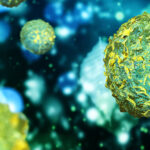Welcome to the second installment of our FAQ blog series! Today, we are looking at differences between CD34+ cells isolated from different tissue sources to provide a better understanding of this important cell population.
Hematopoietic stem cells (HSCs) are an important and rare population of cells that reside in a specialized niche within the bone marrow (BM) capable of self-renewal and multilineage myeloid and lymphoid differentiation to maintain blood cell homeostasis. Myeloid cells include monocytes, macrophages, neutrophils, basophils, eosinophils, erythrocytes, and megakaryocytes (which give rise to platelets). Lymphoid cells include T cells, B cells and natural killer cells. HSCs or more broadly, HSPCs (hematopoietic stem/progenitor cells) have an established history in the clinic where autologous and allogeneic stem cell transplantation (HSCT) has been utilized to treat a number of hematological diseases and cancers. This cell population continues to further our foundational knowledge of stem cells and serves as the basis for novel technologies to further drug discovery and regenerative medicine applications, such as CAR-T immunotherapy.
CD34 is the defining cell surface marker, most frequently used to identify, isolate and quantify HSPCs for bone marrow transplantation (HSCT) to treat hematological diseases. Because of the importance of accurate CD34+ enumeration cells to optimize the timing of peripheral blood stem cell collections in clinical applications, the International Society of Hematotherapy and Graft Engineering (ISHAGE) has established a standardized methodology to quantify CD34+ cells in peripheral blood and apheresis products1. This four-parameter flow cytometric method helps to ensure consistency across health centers and labs (Figure 1).

Figure 1. Sample ISHAGE four color flow cytometry dot plots with sequential gating strategy for quantification of CD34+ content.
Tissue Sources
The three main tissue sources of HSPCs are bone marrow (BM), umbilical cord blood (UCB) and mobilized peripheral blood (mPB). The CD34+ content and ease/availability of collection varies across the tissue sources, as shown in Table 1. Because the endogenous frequency of CD34+ cells in peripheral blood is very low, mobilization with FDA-approved drugs, like Neupogen® and Mozobil® is required to recruit HSPCs from the bone marrow into the bloodstream.

Table 1. The three main tissue sources for HSPC isolation
*Frequencies based on AllCells internal data
**Range represents different frequencies based on the mobilization regimen used
Functional Differences Between Tissue Sources
Researchers interested in the population of CD34+ cells have noted functional differences in HSPCs isolated from the three tissue sources we have described, which warrants further evaluation and consideration (Table 2). For example, mPB CD34+ cells, used in the majority of modern-day allogeneic HSCT procedures demonstrate faster engraftment than CB- or BM- derived CD34+ cells but appear to pose a higher risk of graft versus host disease (GVHD) and transplant rejection in patients2. UCB-derived CD34+ cells are thought to be more primitive, with a higher proliferative and differentiation capacity than the other tissue sources. However, their limited and sporadic availability has restricted their clinical utility to the treatment of pediatric diseases3. With regards to cell cycle, the majority of UCB- and mPB- HSPCs are in quiescent G0/G1 phase, which is thought to confer a clinical advantage in stem cell engraftment4,5. In another study, bone marrow CD34+ cells contain high percentages of CD19+ cells not found in significant quantities in the other cell preparations whereas UBC CD34+ cells contained a higher percentage of CD38- cells than the other cell preparations6. While differences in surface marker expression and response to cytokine stimulation between the three sources exist, they do not appear to correlate with engraftment or proliferative potential of the cells7.

Table 2. Functional differences between CD34+ HSPCs isolated from different tissue sources.
We’ve highlighted here some of the major functional differences between HSPCs isolated from three main tissue sources. Your choice for CD34+ cell isolation may depend on many factors, one of which may be access to high quality tissue source material. In some cases, researchers in academic institutions may have access to these tissues through regional health centers, but this is not always feasible or practical. The availability of these tissues through commercial suppliers like AllCells makes it easy to get the cells you need for whatever your research requires. Our expertise in the provision of high-quality human blood and bone marrow-derived tissue and isolated cells has been leveraged by biomedical researchers in cell and gene therapy, immuno-oncology, stem cell therapy, and contract development manufacturing organizations worldwide for research and clinical applications. Both research grade and GMP products are available, collected from a diverse donor pool at AllCells FDA-registered on-site processing and collection facilities located across the US, enabling the shortest lead times in the industry.
We are committed to providing our customers with high-quality products to help accelerate scientific discoveries with ease and flexibility. For more information, please visit us at www.allcells.com.
References
- Sutherland DR, Anderson L, Keeney M, Nayar R, Chin-Yee I. The ISHAGE guidelines for CD34+ cell determination by flow cytometry. International Society of Hematotherapy and Graft Engineering. J Hematother. 1996;5(3):213-226. doi:10.1089/scd.1.1996.5.213
- Lipton JM. Peripheral blood as a stem cell source for hematopoietic cell transplantation in children: is the effort in vein?. Pediatr Transplant. 2003;7 Suppl 3:65-70. doi:10.1034/j.1399-3046.7.s3.10.x
- Wu AG, Michejda M, Mazumder A, et al. Analysis and characterization of hematopoietic progenitor cells from fetal bone marrow, adult bone marrow, peripheral blood, and cord blood. Pediatr Res. 1999;46(2):163-169. doi:10.1203/00006450-199908000-00006
- Graf L, Heimfeld S, Torok-Storb B. Comparison of gene expression in CD34+ cells from bone marrow and G-CSF-mobilized peripheral blood by high-density oligonucleotide array analysis. Biol Blood Marrow Transplant. 2001;7(9):486-494. doi:10.1053/bbmt.2001.v7.pm11669215
- Traycoff CM, Abboud MR, Laver J, Clapp DW, Srour EF. Rapid exit from G0/G1 phases of cell cycle in response to stem cell factor confers on umbilical cord blood CD34+ cells an enhanced ex vivo expansion potential. Exp Hematol. 1994;22(13):1264-1272.
- Van Epps DE, Bender J, Lee W, et al. Harvesting, characterization, and culture of CD34+ cells from human bone marrow, peripheral blood, and cord blood. Blood Cells. 1994;20(2-3):411-423.
- De Bruyn C, Delforge A, Lagneaux L, Bron D. Characterization of CD34+ subsets derived from bone marrow, umbilical cord blood and mobilized peripheral blood after stem cell factor and interleukin 3 stimulation. Bone Marrow Transplant. 2000;25(4):377-383. doi:10.1038/sj.bmt.1702145




